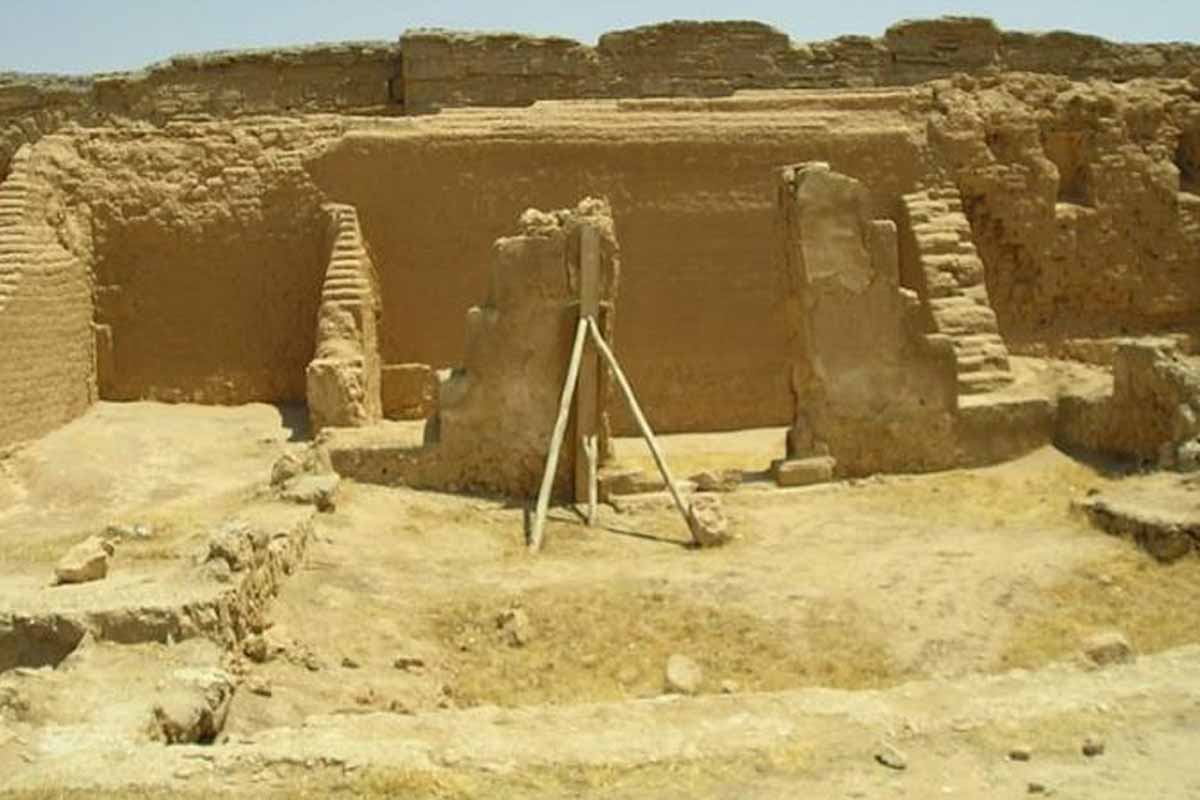Some stories refuse to stay buried. This archaeological breakthrough feels like the desert finally choosing to speak. In Egypt’s Kharga Oasis, sand loosens its grip, and a forgotten settlement breathes again. Two churches rise from dust, and a painted healing stirs the air.
Archaeological breakthrough
Start with place before glory. Kharga sits far from Cairo, a long drive into honesty. Wind moves differently here. So do memories. The team found a settlement stitched together with mudbrick and patience. Homes still cradle their plaster, soft as old linen. Ovens squat in corners, ready for bread that will never bake again. Jars rest half-buried, bellies round with what once was grain or oil. Shards carry inked lines, quick notes from lives that refused silence. A bracelet of glass. A weight of stone. A doorway smoothed by hands.
There were burials, too careful, ordinary, human. This archaeological breakthrough stretches across streets that feel familiar, even in the Western Desert. You can almost hear the evening news of that world: a goat bleating, a pot cooling, a prayer. It isn’t grandeur that stops you. It’s intimacy. The kind that turns ruins into neighbors. Stand still a moment, and you’ll catch the settlement watching you back.
Life in the oasis, reimagined
Daily life always tells the truth. You see it in the small fixes. A patch of plaster here, a re-hung door there, a threshold repaired. People stayed, adapted, and kept cooking through dust storms and long light. Water meant everything, so the jars mattered more than any sermon. A household is a ledger of choices, and this one reads stubborn and hopeful. Tools sit exactly where a hand would reach. A child’s fingers once traced those walls, bored, curious, alive. Inside this archaeological breakthrough, the quiet logistics of survival shine brighter than any treasure.
Bread, salt, shade, community four pillars you can build a life upon. The finds say, we managed. We learned the desert’s moods. Even the alleys seem designed for air to move gently, not fight. You picture shade cloths crossing lanes, softening a white noon. Someone dealt clay with muscle and music. Someone kept a ledger, or maybe a list of favors. These rooms belong to people who understood enough to stay. That knowledge hums under your feet, steady as a heartbeat.
Two churches, two voices
Then the ground clears its throat, and faith steps forward. Two churches stand there, different sizes, same insistence. One is a basilica, wide-shouldered, built of mudbrick and confidence. A central hall stretches long, flanked by aisles where feet learned reverence. The other is modest, rectangular, with seven columns standing guard outside. Between them, you can trace a community mid-shift, not erasing, but evolving. Coptic inscriptions cling to interior walls, ink still stubborn in the lime. You read fragments, and they read you back.
They carry names, blessings, rituals shaped by habit and hope. Each church threads into the archaeological breakthrough, stitching faith to the fabric of work and weather. Pagan echoes don’t vanish; they soften and blend. People brought yesterday’s hands to tomorrow’s altar. It looks less like conquest, more like a neighborly handoff. You can almost hear sandals at dawn, the bench creak, the shared breath. All of it ordinary. All of it holy.
The mural that whispers
And then color. A mural, fragile as a sigh, showing Jesus healing the sick. Not thunder. Touch. The earliest art often chooses tenderness over spectacle. A hand extended. A face easing. A crowd learning what mercy looks like. Paint this old travels badly, so there are no public photos yet. Conservators keep it dim and cool, guarding minutes and molecules. We will wait. The art asks for that kind of respect. The scene holds because it remembers being needed. In a desert town, healing isn’t theory. It’s the difference between tomorrow and never. The mural belongs at the heart of the archaeological breakthrough because it returns the human scale. Faith here is practical. It keeps watch.
Art does the same, teaching by presence more than words. Stand near the wall, and the room seems to inhale. You feel the hush a patient brings into a clinic. Hope is heavy at first. Then it floats.
Why this moment matters
Finds like this recalibrate timelines. They also soften arguments. Egypt didn’t flip a switch from one world to another. It blended, argued, negotiated, and kept eating supper together. Western oases weren’t empty waypoints. They were homes with calendars and saints’ days. This archaeological breakthrough reminds us that big history happens in small rooms. Cooks, not kings, set the pace most days.
A settlement held its ground while ideas crossed horizons. The churches carried those ideas without breaking the neighborhood. That’s how change actually works carefully, awkwardly, then all at once. Researchers will return with brushes, cameras, and questions that grow new questions. More inscriptions may rise from the dust.
More walls may steady under scaffold and thread. Each season will add another paragraph to this desert letter. And we’ll keep reading, because the story is generous. It gives us craft, ritual, and proof that ordinary people steer eras. If you listen well, you can hear their closing line: we were here, and we mattered. That’s the gift folded into this archaeological breakthrough a map back to the people inside the past.
